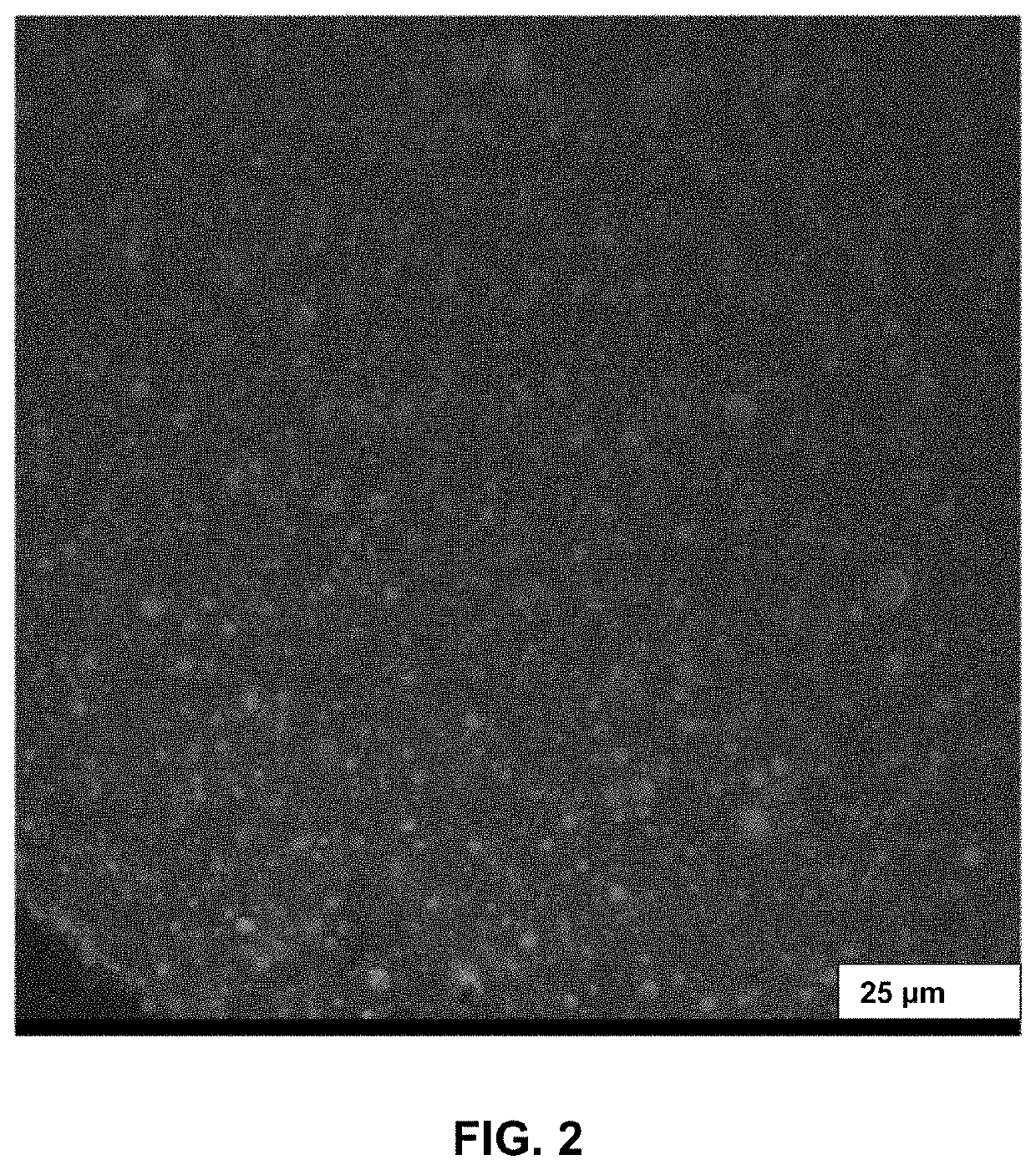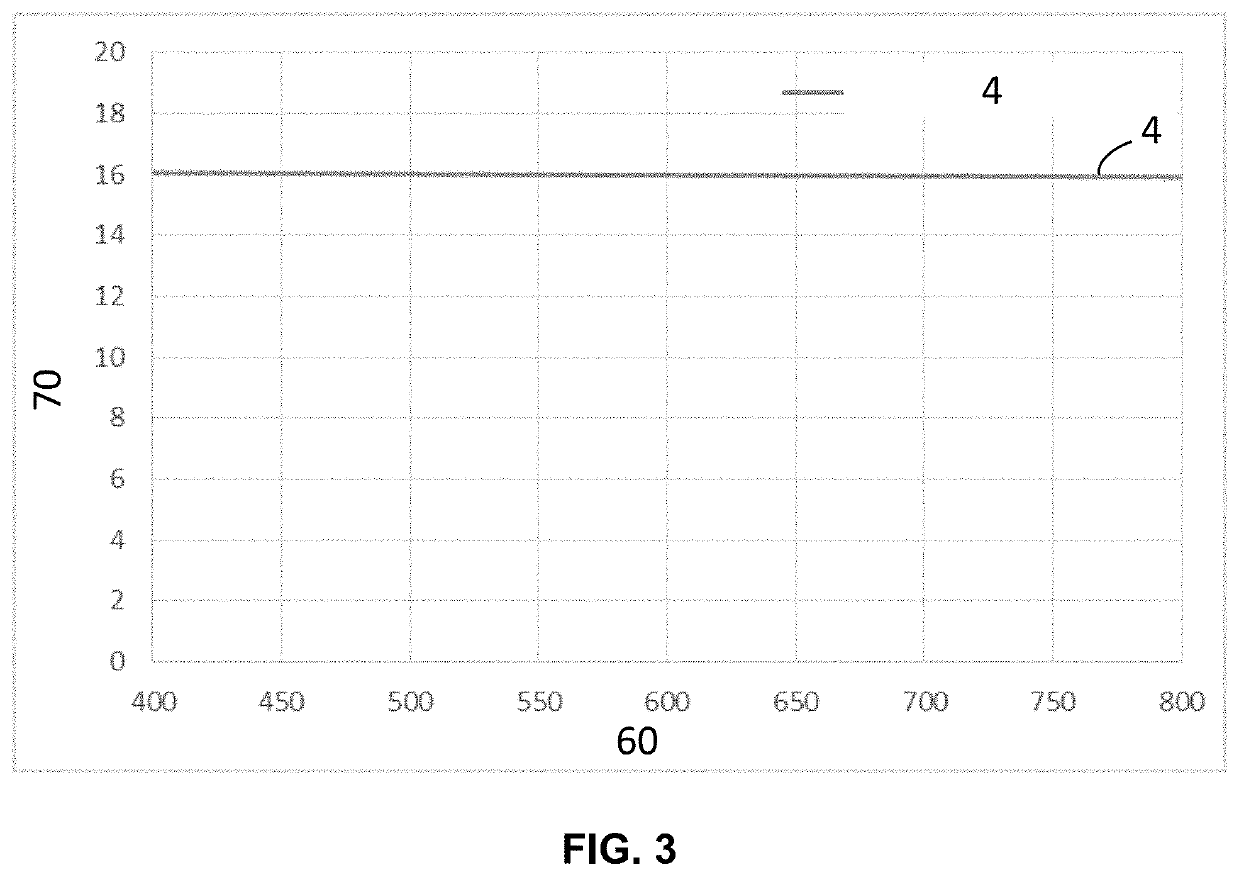Water-borne precursors for forming heterophasic anti-fouling, polymeric coatings having a fluorinated continuous phase with non-fluorinated domains
a precursor and polymer coating technology, applied in antifouling/underwater paints, biocides, coatings, etc., can solve the problems of affecting the performance of sensors' surfaces, and extreme wettability of these surfaces, etc., to achieve enhanced repel foreign matter, high crosslink density, and improved durability
- Summary
- Abstract
- Description
- Claims
- Application Information
AI Technical Summary
Benefits of technology
Problems solved by technology
Method used
Image
Examples
example 1
Example 1 is a heterophasic polymeric coating prepared in accordance with certain aspects of the present disclosure having a branched fluorine-containing polymer and a fluorine-free polymer (polypropylene glycol (PPG)). A container is charged with about 2 g of water-borne polyvinylidene fluoride copolymer (ZEFFLE™ S-7560), about 0.72 g of polypropylene glycol (PPG, MW 425) and an additional 20.77 g of water. To the resin solution, about 0.7 g polyisocyanate crosslinker (BAYHYDUR™ XP2547) and about 200 ppm of dibutyltin dilaurate catalyst is added. After the catalyst is added, the liquid precursor having the resin is thoroughly mixed. The solution is then sprayed onto the substrate of choice. After the water / carrier is allowed to evaporate, the coated substrate is placed in an oven set to 60° C. for 4 hours.
example 2
Example 2 is a heterophasic polymeric coating prepared in accordance with certain aspects of the present disclosure having a branched fluorine-containing polymer and a fluorine-free polymer (a PLURONIC™ based polyalkylene glycol block copolymer). A container is charged with about 4 g of water-borne polyvinylidene fluoride copolymer (ZEFFLE™ S-7560), about 1.55 g of a triblock copolymer comprising poly(ethylene glycol) / poly(ethylene oxide)(PEG / PEO) and poly(propylene oxide) (PPO / PPG) (commercially available as PLURONIC™ P123, 70% PPG), and 31.53 g of additional water. To the resin solution, about 0.18 g of polyisocyanate crosslinker (BAYHYDUR™ XP2547) and about 200 ppm of dibutyltin dilaurate catalyst is added. After the catalyst is added, the liquid precursor having the resin is thoroughly mixed. The solution is then sprayed onto the substrate of choice. After the water / carrier is allowed to evaporate, the coated substrate is placed in an oven set to 60° C. for 4 hours.
example 3
Example 3 is a heterophasic polymeric coating prepared in accordance with certain aspects of the present disclosure having a branched fluorine-containing polymer and a fluorine-free polymer (poly(ethylene glycol) (PEG) at about 10% by weight). A container is charged with about 4 g of polyvinylidene fluoride copolymer (ZEFFLE™ S-7560), about 0.32 g of polyethylene glycol (MW 200 g / mol) and 25.18 g of additional water. To the resin solution, about 0.7 g of polyisocyanate crosslinker (BAYHYDUR™ XP2547) and about 200 ppm of dibutyltin dilaurate catalyst is added. After the catalyst is added, the liquid precursor having the resin is thoroughly mixed. The solution is then sprayed onto the substrate of choice. After the water / carrier is allowed to evaporate, the coated substrate is placed in an oven set to 60° C. for 4 hours.
PUM
| Property | Measurement | Unit |
|---|---|---|
| average size | aaaaa | aaaaa |
| contact angles | aaaaa | aaaaa |
| size | aaaaa | aaaaa |
Abstract
Description
Claims
Application Information
 Login to View More
Login to View More - R&D
- Intellectual Property
- Life Sciences
- Materials
- Tech Scout
- Unparalleled Data Quality
- Higher Quality Content
- 60% Fewer Hallucinations
Browse by: Latest US Patents, China's latest patents, Technical Efficacy Thesaurus, Application Domain, Technology Topic, Popular Technical Reports.
© 2025 PatSnap. All rights reserved.Legal|Privacy policy|Modern Slavery Act Transparency Statement|Sitemap|About US| Contact US: help@patsnap.com



